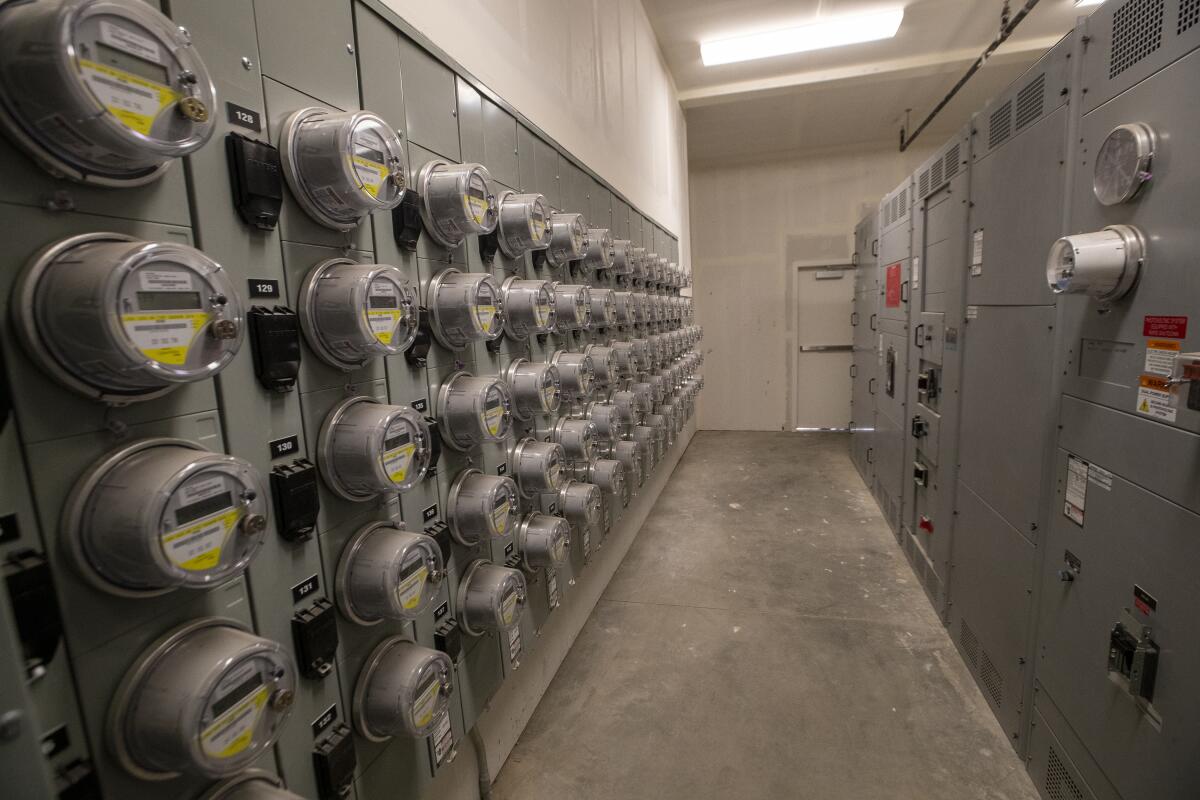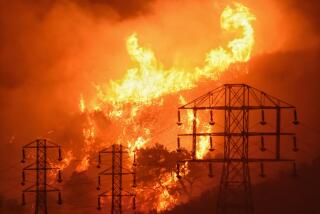Editorial: New homes need to be fossil fuel-free

- Share via
In September, while touring the charred wreckage left by yet another devastating wildfire, Gov. Gavin Newsom declared: “This a climate damn emergency.” The state’s ambitious strategies to curtail greenhouse gas emissions were not enough to counter the effects of a warming planet, Newsom warned, and he pledged to “accelerate all of them, across the board.”
Except, apparently, at the California Energy Commission, where officials want to delay a requirement that new homes be built only with electric appliances.
For the record:
8:22 a.m. March 5, 2021An earlier version of this story said that more than 40 cities have banned gas hookups or required buildings to be ready for all-electric appliances. Some cities have only encouraged, not required, all-electric readiness.
Climate activists have pushed the commission to ban natural gas hookups in new residential construction starting in 2023. Instead the commission appears to prefer a phased approach, requiring that builders first begin to incorporate electric water heaters or home heating systems before requiring fully electric construction in 2026.
The commission is expected to vote on the new building standard this summer.
In a “climate damn emergency,” there’s no time to delay commonsense regulations. Natural gas in heating and cooling systems, water heaters and stoves causes about 10% of California greenhouse gas emissions. Postponing the mandate for all-electric new construction by three years would result in an additional 3 million tons of carbon emissions by 2030 — the equivalent of putting 650,000 more cars on the road for a year, according to one analysis.
In 2018, the energy commission required that newly constructed homes and low-rise apartment buildings have solar panels to generate electricity. Requiring all electric appliances and systems is the next logical step.
It’s much cheaper and easier to build all-electric buildings from the get-go compared with the cost of retrofitting older buildings. It costs about the same, or less, to build an all-electric home, although there is concern that consumers could face brownouts and higher utility bills unless the state addresses long-standing problems with the electricity grid and electricity rates. The fact is, California has already committed to weaning its energy system from fossil fuels in the coming decades. It doesn’t make sense to keep building gas infrastructure in new homes. As it is, the state is likely to spend billions of dollars in the coming years to help property owners swap out gas appliances for electric ones.
Certainly, the transition to all-electric homes would be a big change for California. For example, only about 2% of homes have electric heat pumps, according to building industry groups. Contractors need to become familiar with the equipment. So do local building departments and inspectors. It’s a sign of how far behind the curve we are and how much help the building industry needs to adjust.
But this isn’t groundbreaking work — most new homes built in the U.S. in recent years don’t have gas hookups, The Times reported last year. Nor is the ban on gas hookups so unusual. More than 40 cities in California have adopted building codes that ban or discourage gas infrastructure.
The shift to all-electric buildings is inevitable. California can’t afford to wait, and Newsom shouldn’t let it.
More to Read
A cure for the common opinion
Get thought-provoking perspectives with our weekly newsletter.
You may occasionally receive promotional content from the Los Angeles Times.










